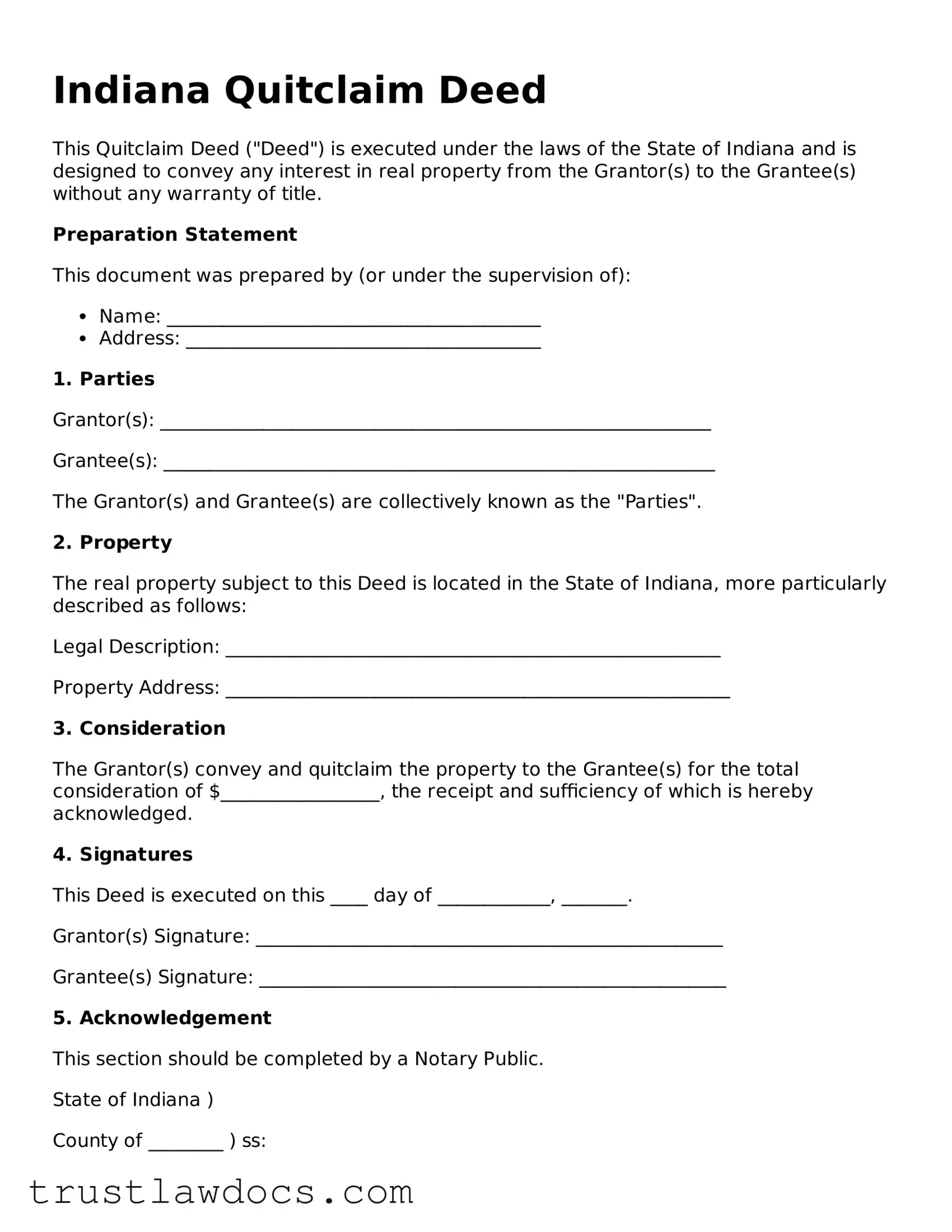Indiana Quitclaim Deed
This Quitclaim Deed ("Deed") is executed under the laws of the State of Indiana and is designed to convey any interest in real property from the Grantor(s) to the Grantee(s) without any warranty of title.
Preparation Statement
This document was prepared by (or under the supervision of):
- Name: ________________________________________
- Address: ______________________________________
1. Parties
Grantor(s): ___________________________________________________________
Grantee(s): ___________________________________________________________
The Grantor(s) and Grantee(s) are collectively known as the "Parties".
2. Property
The real property subject to this Deed is located in the State of Indiana, more particularly described as follows:
Legal Description: _____________________________________________________
Property Address: ______________________________________________________
3. Consideration
The Grantor(s) convey and quitclaim the property to the Grantee(s) for the total consideration of $_________________, the receipt and sufficiency of which is hereby acknowledged.
4. Signatures
This Deed is executed on this ____ day of ____________, _______.
Grantor(s) Signature: __________________________________________________
Grantee(s) Signature: __________________________________________________
5. Acknowledgement
This section should be completed by a Notary Public.
State of Indiana )
County of ________ ) ss:
On this ____ day of ____________, _______ before me, a notary public, personally appeared ____________________________, known to me (or satisfactorily proven) to be the person(s) whose name(s) is/are subscribed to the within instrument, and acknowledged that he/she/they executed the same for the purposes therein contained.
In witness whereof, I hereunto set my hand and official seal.
__________________________
Notary Public
My commission expires: ___________
